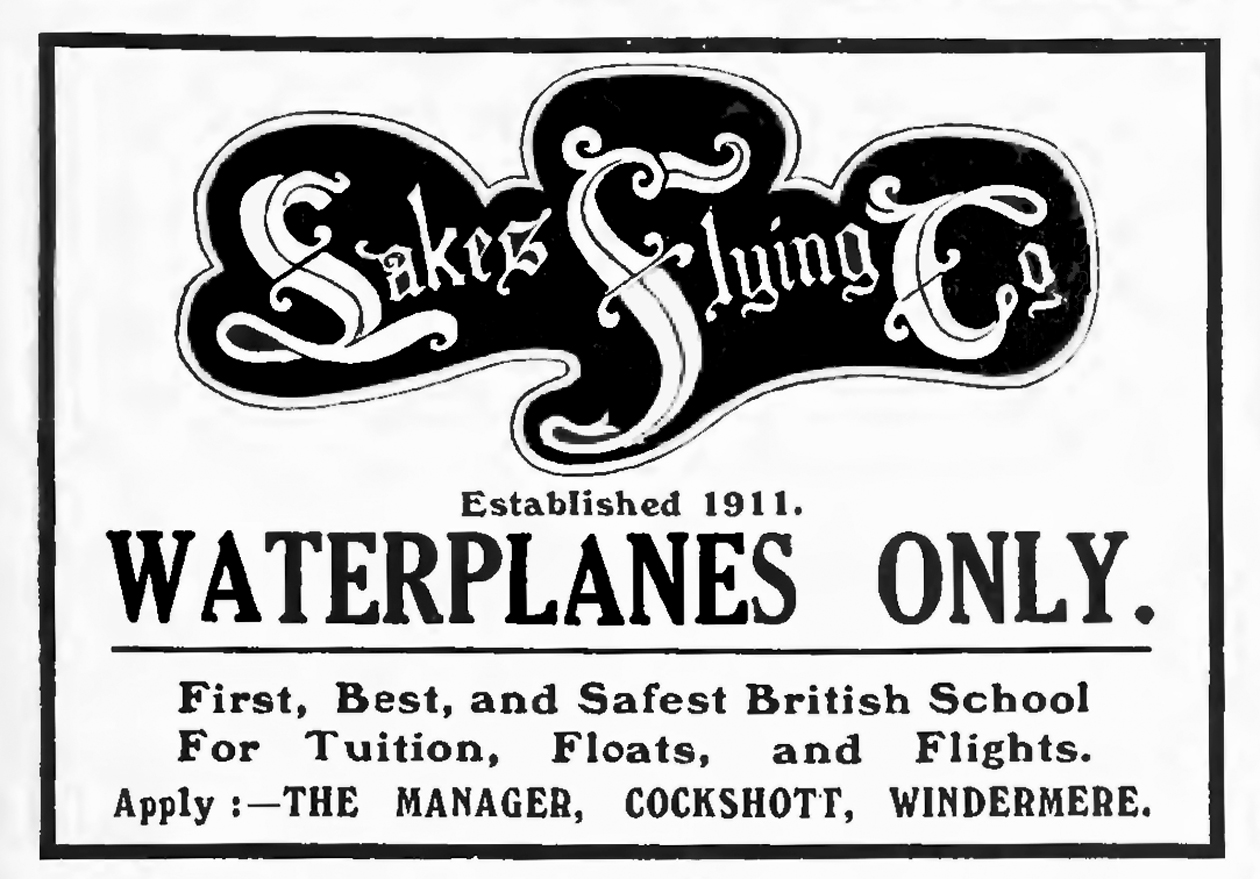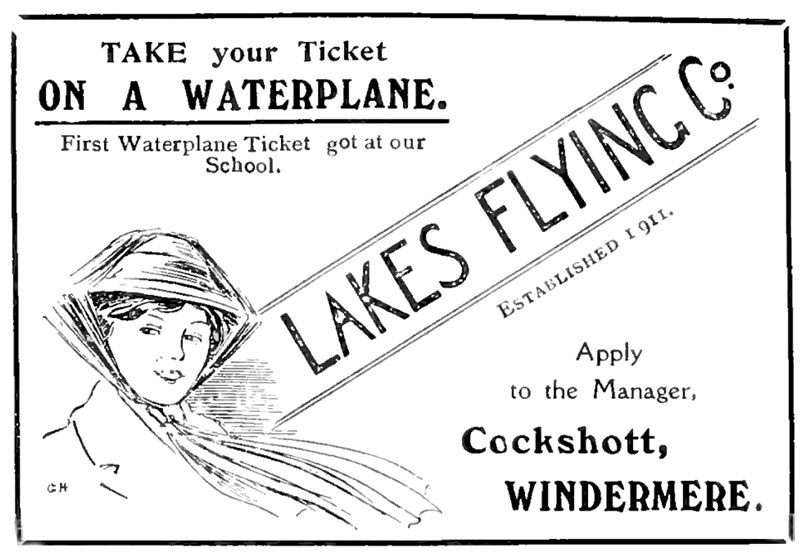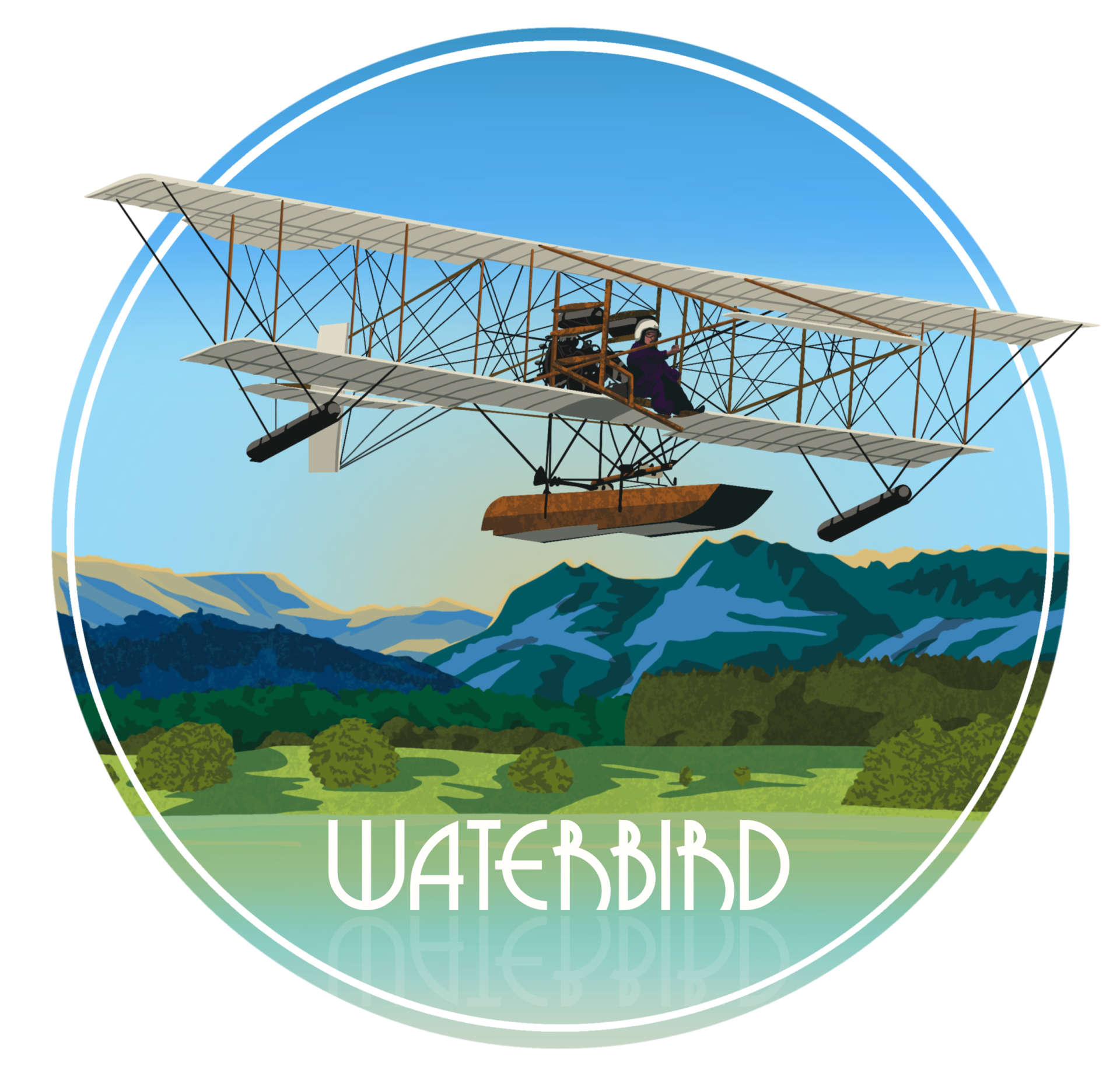Cockshott


For a map depicting the location of Cockshott, please click here
Edward Wakefield’s hangar at Hill of Oaks, Windermere, which ‘had proved just right for aeroplane experimenting’, was considered too out of the way for business, hence him wanting to come to Bowness-on-Windermere. He took out a lease at £15 per year of glebe land within the living of St John the Evangelist (which church was open 1885-1995). Wakefield obtained planning permission on 10 January 1912 from Windermere Urban District Council, for a location that was described as a ‘swamp’.
The hangar at Cockshott was 80 feet by 44 feet, painted green and cost £321. The location can be seen in the photo at the top of this page: the first building bottom right. It was about 200 yards from Cockshott Point.
Aeroplanes were launched and retrieved on a ramp by way of winch-operated trolley: a photo of the Deperdussin during July 1912, with Borwick & Sons’ pile driving barge in the background, upon which it had been delivered onward from Windermere railway station.
On 29 March 1912, the hangar collapsed in a storm which swept the country, causing Waterbird’s wings to be badly damaged. It was re-erected, with the benefit of shoring. For what happened to Waterbird’s surviving parts, please click here.
Cockshott was used for training pilots, head office and works, but in June 1916 the HQ of the Royal Naval Air Service transferred to Hill of Oaks through to June 1917.
STORIES BEHIND PHOTOS
This photo was taken in August 1913 by Vida Bloede (17) who was on vacation from Maryland, visiting Scotland and England with the rest of her family. In that Vida had photographed the Wright Flyer at Virginia in 1908, it might be assumed she wanted to have a passenger flight in Waterhen. In the canoe is her 19 year old brother, Victor Bloede, Junior. Their father had become wealthy, having invented the process for dyed fabric that would not fade on exposure to sunlight and also the gum adhesive used on US postage stamps.
These photos (from the front and the side) were taken on 25 August 1913. Julian Crossley (14) and his brother Patrick (11) were walking around Cockshott with their grandmother, a “very formidable lady”, when Herbert Stanley Adams did not refuse her request to take the boys up in Waterhen. With Julian sat on the back of the pilot’s seat and Patrick behind, they went up for a short flight; the first at Windermere with 2 passengers. Saloon launch Lily (whose name was later changed to Branksome) is in the background.
In the course of his work, Julian would travel abroad by Short Solent flying boat. Patrick also travelled by Imperial Airways, this photo is of a Handley Page H.P.42 to Paris in 1930.
Their uncle was Percy Crossley, a yacht designer, whose work included Windermere 17ft Class yachts (Merlin, built in 1908, may be the oldest of the type afloat). Percy wrote a chapter entitled ‘Yachting on Windermere’ for the book The Lake Counties by W G Collingwood. He trained as a naval architect with Linton Hope in Southampton. A letter from Hope to Flight magazine 1 January 1910 brought editorial comment that he ‘is much interested in the comparative problems provided by the racing yacht and the aeroplane’. Hope later joined the RNAS and designed flying boats, including for English Electric at Lytham.
Julian’s son, Joe, was out in a dinghy with his model flying boat on 22 August 1952 when he unexpectedly witnessed the first take-off by the Saunders-Roe Princess flying boat when it flew above him at no more than 200 feet. Having trained at the Aeronautical Engineering College, Hamble, he worked for British European Airways at London Airport (later re-named Heathrow).
For extracts from an interview with Joe Crossley about his father’s flight in Waterhen and his encounter with the Saunders-Roe Princess, please click here.
This photo was taken in 1915 inside the hangar is very interesting as it shows not only the Blériot seaplane, but also at top left an uncovered port wing of Waterhen adjacent to Waterhen’s rudder, at bottom left the ex-Gnosspelius No. 2’s Clerget engine and underneath the Blériot’s starboard wing a partially assembled float for the Blackburn Improved Type 1. Behind the engine is a mobile forge [for making brackets and straightening/ bending steel plates and fixings] and what appears to be a gas generator running up to a gas torch.
SUBSEQUENT AVIATION
Aviation returned to the lake during July-October 1919, when two Avro 504s were operated from the Cockshott hangar by Howard Pixton for the Avro Transport Company, including joyriding, instruction, charter flights and delivering newspapers to the Isle of Man. Pixton ran a garage firm at the hangar until 1928.
